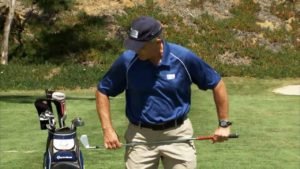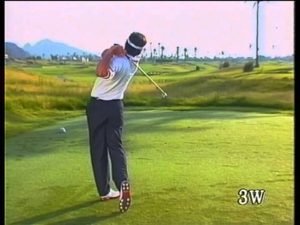Five Fundamentals to Great Ball Striking.
Five Fundamentals to Great Ball Striking.
Hi, I’m Mel Sole, Director of Instruction at the Mel Sole Golf School, headquartered at Pawleys Plantation Golf and Country Club in Pawleys Island, SC. We conduct 1, 2, and 3-day golf schools, hourly golf lessons, and senior golf schools—any golf instruction program your heart desires. Give us a call at 800-624-4653 or 843-237-4993. We will be happy to book a commuter school or a package that contains accommodations, golf, and golf school.
We all want to be good ball strikers. Most golfers looking to improve will go the range and hit balls working on swing technique. Here Dave Phillips of the Titleist Performance Institute and a world leader studying the golf swing give us insights into accomplishing a great swing quickly. By understanding these 5 key fundamentals, your work on the range will be far more productive.
Golf Blog by the Mel Sole Golf School.
Here at the Titleist Performance Institute we believe that great golf swings don’t have to look the same. There are thousands of touring professionals on the planet and no two swings look the same. So how do you isolate the key characteristics that make all these swings work? After 22 years of studying great golf swings and testing players in every possible manner, we have come up with five fundamentals that make up every great golf swing.
1. Center Face / Square Face Contact.
In the Five Fundamentals to Great Ball Striking this fundamental is hard to debate. Modern day launch monitors and overall club designs show us that the closer you hit the ball to the sweet spot (which tends to be centrally located) the better energy transfer we will get into the golf ball.
Off-center hits tend to cause a more tilted spin access and energy loss to the ball. Therefore, golfers tend to create more inconsistent flight patterns to the golf ball. Just as an off-center contact can create excessive spin, so can a closed or open clubface contact. The more you contact the golf ball with a glancing blow from a non-square face, the more you will tilt the spin access on the ball.
So the first key fundamental found in every great ball striker is their ability to repeatedly find the center of the face. And to square the face at impact.
2. Path of Intention = Shot of Intention.
This fundamental allows for the variety of ball flights seen in so many players. Great ball strikers deliver the club face on a swing plane or path that will create their intended shot. In other words, if they want to hit a draw, then in general a more in-to-out path with a closed club face will allow this ball flight to occur. If they want to cut the ball, then a more out-to-in or square path with a more open club face will give them better results. Poor ball strikers try to hit shots with an improper path, attack angle and club face position. It is hard to get repeatable and efficient results when you don't understand what causes the ball to curve and how it differs with irons from woods.
3. Dominant Rotary Force.
Great golf swings have a high rotational force that dominates their movement. The less lateral or front to back movement that occurs in the golf swing, the more rotational force a player can develop. This rotational force is what makes great players develop such high club head speeds at impact. The more you add other movements besides rotation to the swing, the more chances you have of making different golf swings with every shot.
So this fundamental is important for two reasons. 1. Maximum speed and power development. And two, balance, tempo, and rhythm. They are all easily repeated with one primary rotational movement. By the way, we all know that there needs to be an aggressive weight shift in the golf swing. But it is this lateral weight shift which begins the dominant rotational force into impact. If the rotary force does not dominate the pattern during the downswing, then you are not applying this fundamental skill.
4. Proper Kinematic Sequence.
The most important fundamental for consistent ball striking is the ability to produce a proper "kinetic link". The basic foundation of any athletic movement is called a kinetic link. This term, used by biomechanists, describes the sequence or chronological series of movements an athlete uses to generate and transfer power throughout their body. In golf, like most sports, the power or energy is created from the ground and passed up through the body to the club head. This transfer of energy from the lower body to the upper torso. From the upper torso to the arms, and from the arms to the club. This is called a golfers kinetic link.
It is amazing to see how many golfers are unable to produce a fluid kinetic link. Using 3-D video technology, we can measure the patient’s ability to generate power in their lower body and transfer this power through upper torso and arms and into the club head. If we see that a golfer has good lower body speed. Good upper torso speed. Poor arm speed, and poor club head speed.
We can start to make some simple conclusions. It seems that they are able to generate power effectively in their lower body and transfer this energy to the upper torso. The upper torso then seems to create speed or power effectively as well, but is deficient in transferring this energy to the arms and club. Therefore, we should evaluate the connection between the upper torso and arms, or the shoulders, since that seems to be the weak link in the kinetic chain. Evaluating the kinetic link is an essential step in determining efficiency breakdowns in our golfing clients.
5. Good Segmental Stabilization.
In the Five Fundamentals to Great Ball Striking, it seems that good players are able to generate power effectively in their lower body and transfer this energy to the upper torso. The upper torso then seems to create speed or power effectively as well, but is deficient in transferring this energy to the arms and club. Therefore, we should evaluate the connection between the upper torso and arms, or the shoulders, since that seems to be the weak link in the kinetic chain. Evaluating the kinetic link is an essential step in determining efficiency breakdowns in our golfing clients.
This last fundamental is the key to generating power and speed in the golf swing. In order to pass energy from one part of your body to the next, there must be a deceleration of the previous segment. This is so that energy can be effectively transferred to the next body part. A great analogy is the cracking of the whip. In order to create a loud snap at the end of a whip, you must rapidly accelerate the handle of the whip. And then quickly stop or decelerate the handle. It is this deceleration of the handle that allows speed to be transferred to the next part of the whip.
Source: Dave Phillips Mel Sole Golf School.
Pictures: US Army Omar Rawlings
Thanks for reading - Five Fundamentals to Great Ball Striking. A really great article that I enjoyed reading myself!
Related Posts.
Increase Hip and Torso Speed – Fitness Friday #71.
The 3 Fundamental Golf Stretches.
Add More Distance for Seniors.
Good Footwork and Weight Transfer.
Easy Golf Drill for Weight Transfer.
PLEASE SUBSCRIBE TO MY CHANNEL, LIKE THIS VIDEO, SHARE IT WITH A FRIEND, LEAVE A COMMENT!



